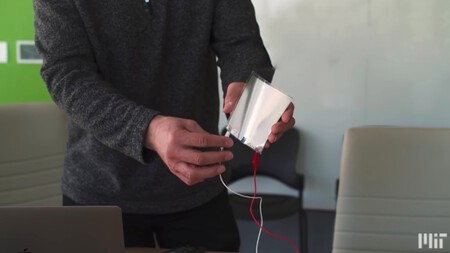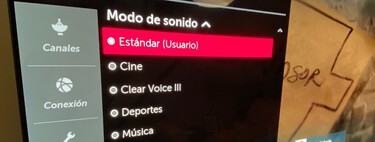The sheet-shaped loudspeakers created to date had a problem: they could not produce sound if vibration was prevented by placing them against a wall. Now, researchers at MIT have redesigned this type of speaker thinner than a sheet of paper to open up a whole field of possibilities.
Despite having a thickness of only a few microns, the novelty does not lie in its fineness. But in the way of producing the sound, much more useful to implement it in all kinds of places.
A reinvention of loudspeakers with many possibilities
Vladimir Bulović, director of the Laboratory for Organic and Nanostructured Electronics at MIT, explains that “it’s extraordinary to take what looks like a thin sheet of paper, attach two paperclips to it, plug it into your computer’s headphone port, and start listening the sounds that emanate from it. Can be used anywhere. One only needs a pinch of electrical power to make it work.”
As can be seen in the video, we are looking at a kind of sheet of paper in which, through two clips, we can connect it to the audio port of any computer and start listening to the song we want. The sound is relatively decent for the slim speaker we have. The advantage, apart from being flexible and thin, is that it is relatively cheap to produce and consumes very little energy.
Vibrations are needed to generate sounds. The usual thing is a membrane that moves up and down, driven by electricity. MIT’s idea is to be able to generate these vibrations even though the “membrane”, in this case the thin sheet of paper, is rigid. How? With a piezoelectric material where there are small domes that vibrate individually.
The sheet of paper is actually a sheet of PET plastic with holes created through lasers. It also has another layer of PVDF, the piezoelectric material. Both layers were applied under vacuum and heated to about 80°C. Thanks to this, a “space” is achieved in the domes so that they can vibrate when electric current passes through them.
The advantage is that the sheet of paper can be rigid against a wall, since these domes only need half a micron to be able to vibrate and produce sound. Total, domes are about 15 micrometers tall, about one-sixth the thickness of human hair.
The researchers also found that by changing the size of the holes and domes they could produce a more or less loud sound. And at the level of efficiency, they say that they only needed 100 mW for a speaker of one square meter. By comparison, a traditional speaker requires 1 W to produce equivalent sound.
Playing with the amplitude and phase, they can be used as a noise cancellation system

This new speaker has many applications. Let’s think about having speakers integrated into any surface, furniture or wall, being able to create three-dimensional effects. But it does not stop there, since generating sound also has advantages beyond listening to music.
Let’s think about ultrasound. According to the researchers, this system could be used to track the movements of people in a specific space, for example a room surrounded by this material.
But perhaps the most striking is noise cancellation. Sound is waves and if a wave with the same amplitude and opposite phase is produced, the gate sound. The researchers propose to use these foil speakers to produce reverse sounds and cancel noise.
Used in this way, you could have a noise cancellation system in noisy environments, such as the cabin of an airplane, in a car, or in a room. And because it requires very little power, it could work alongside devices or places where battery life or access to a power source is limited.
More information | MIT
George is Digismak’s reported cum editor with 13 years of experience in Journalism
